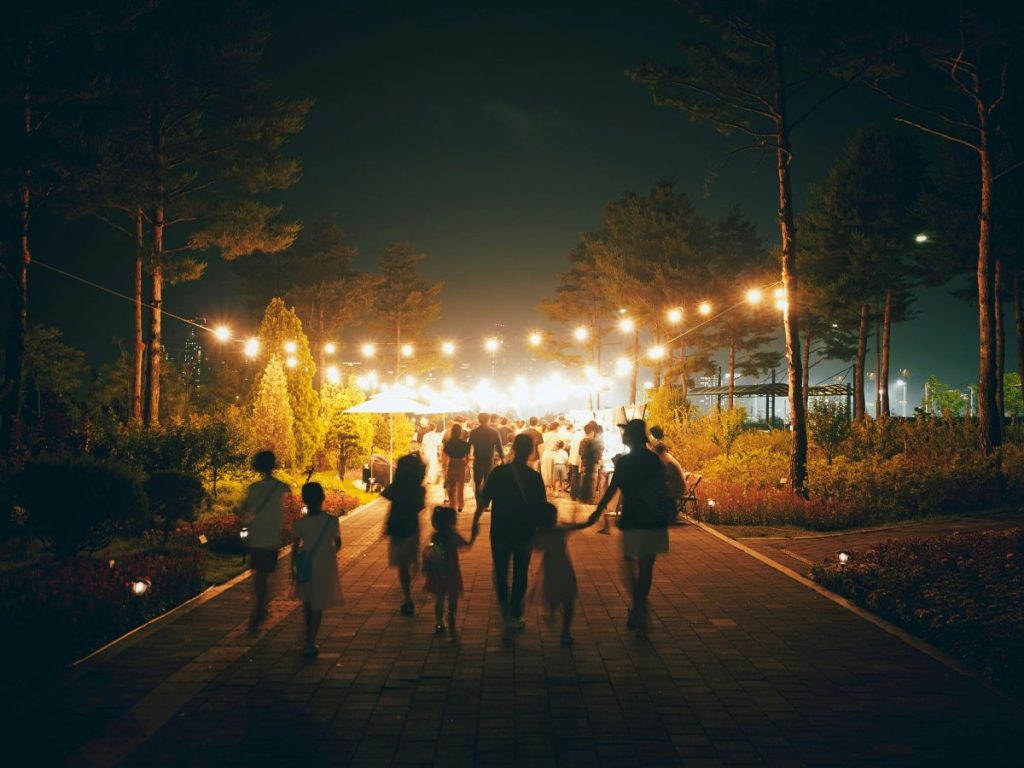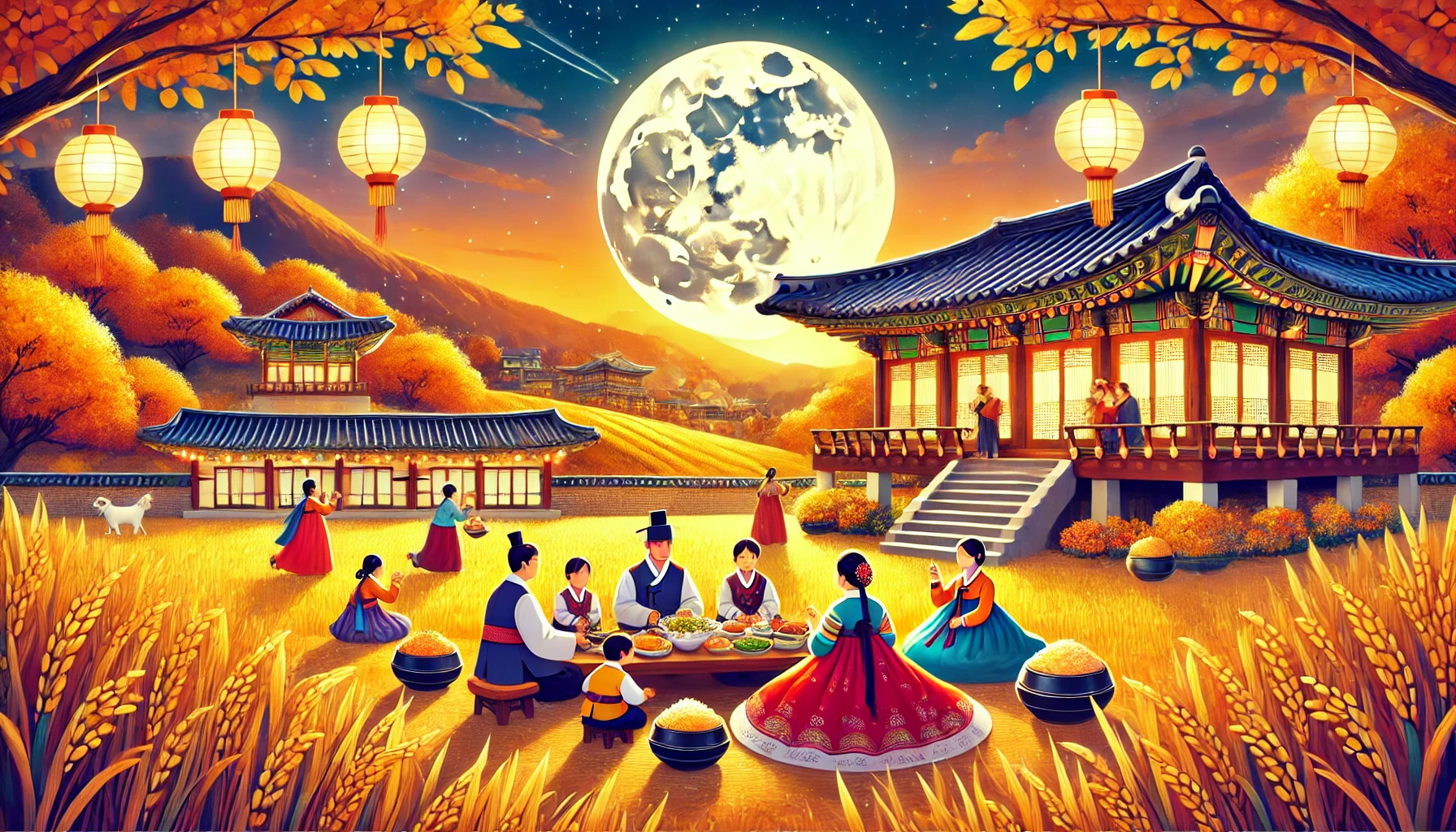Chuseok (추석), also known as Korean Thanksgiving Day, is one of South Korea’s most significant traditional holidays. This major harvest festival is celebrated on the 15th day of the eighth lunar month, aligning with the full moon. It is a time of gratitude, family reunions, ancestral rites, and feasting, reflecting the deep-rooted customs of Korean culture. Let’s explore the origins, traditions, and modern-day celebrations of this auspicious occasion in detail.
Origins of Chuseok
The origins of Chuseok date back to ancient Korea, with historical records linking the festival to the Silla Dynasty (57 BCE–935 CE). One popular theory suggests that Chuseok originated from “Gabae,” a weaving contest held between two teams of women during King Yuri’s reign. After a month of competition, the team that wove the most fabric was rewarded with a grand feast, marking the beginning of Chuseok’s celebratory spirit. Others believe that Chuseok evolved from shamanistic rituals that honored the harvest moon, a celestial symbol of abundance and prosperity. Regardless of its precise origins, Chuseok has long been a time for Koreans to give thanks for the year’s harvest and honor their ancestors.
Charye: Honoring Ancestors
A central element of Chuseok is Charye (차례), the ancestral memorial rite. Families gather to prepare a table filled with traditional foods, offering them to their ancestors as a gesture of respect and gratitude. The Charye table includes an array of meticulously arranged dishes such as rice, meat, fish, vegetables, and seasonal fruits. One of the most symbolic offerings is songpyeon (송편)—a half-moon-shaped rice cake stuffed with sweet fillings like sesame seeds, red bean paste, or chestnuts. It is believed that making beautiful songpyeon ensures good fortune and prosperity.
Seongmyo and Beolcho: Visiting and Tending to Ancestral Graves
Alongside Charye, families participate in Seongmyo (성묘), where they visit the graves of their ancestors to pay respects. This tradition involves Beolcho (벌초), the act of clearing weeds and tidying the burial sites as a sign of reverence. Families bow and offer food, liquor, and prayers to express their continued gratitude and remembrance. This practice reinforces the importance of filial piety, a fundamental value in Korean society.
The Chuseok Feast: A Culinary Delight
Chuseok is synonymous with sumptuous feasts, featuring an array of traditional Korean dishes made from freshly harvested ingredients. Some of the most popular Chuseok foods include:
- Songpyeon (송편) – Half-moon-shaped rice cakes made with glutinous rice flour and filled with sweet or nutty ingredients.
- Jeon (전) – Savory Korean pancakes made with ingredients such as zucchini, fish, or mung beans and pan-fried to perfection.
- Galbijjim (갈비찜) – Braised short ribs cooked in a soy sauce-based marinade with vegetables.
- Japchae (잡채) – Stir-fried glass noodles mixed with vegetables and beef, seasoned with soy sauce and sesame oil.
- Makgeolli (막걸리) – A traditional Korean rice wine often enjoyed during Chuseok celebrations.
These dishes not only highlight the rich culinary heritage of Korea but also serve as a reminder of the season’s bounty.

Traditional Games and Folk Activities
Chuseok is not just about food and ancestral rites; it is also a time for entertainment and community bonding. Many Koreans engage in traditional folk games and performances, including:
- Ganggangsullae (강강술래) – A traditional circle dance performed by women under the full moon, symbolizing unity and celebration.
- Ssireum (씨름) – Korean wrestling, where two competitors try to throw each other to the ground using strength and technique.
- Hitting Tuho (투호) – A game in which players throw sticks into a narrow-mouthed container to test their accuracy and patience.
- Yutnori (윷놀이) – A board game played with wooden sticks, similar to dice, where players strategize to move their tokens across the board.
These folk activities enrich the festive atmosphere and foster a sense of togetherness among families and communities.
Chuseok in Modern Korea
In contemporary Korea, Chuseok remains a cherished holiday, though certain traditions have evolved over time. With urbanization and busy lifestyles, some families opt for simplified ancestral rites or choose to celebrate in more modern ways. The long holiday weekend also prompts many Koreans to travel to their hometowns, leading to one of the nation’s busiest travel seasons.
Additionally, workplaces and brands embrace Chuseok by offering gift sets, which commonly include premium fruits, traditional sweets, health supplements, and even high-end beef. These gift exchanges symbolize appreciation and goodwill.
Chuseok Abroad: A Global Celebration
With the Korean diaspora spreading across the globe, Chuseok is now celebrated in many countries. Korean communities worldwide organize cultural festivals featuring traditional performances, food stalls, and educational programs to share their heritage with others. The holiday serves as a bridge between generations and cultures, strengthening Korean identity worldwide.
Conclusion
Chuseok is more than just a holiday; it is a deeply ingrained tradition that embodies gratitude, family, and cultural heritage. Whether through the preparation of delicious food, honoring ancestors, or participating in joyful festivities, Koreans come together to celebrate the spirit of togetherness and thanksgiving. As the full moon shines brightly during Chuseok, it serves as a reminder of the enduring values of love, respect, and gratitude that define Korean culture.





